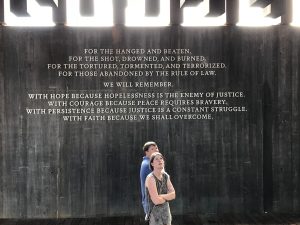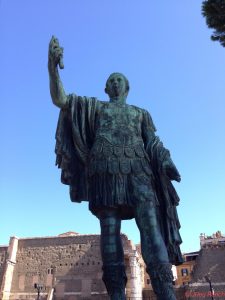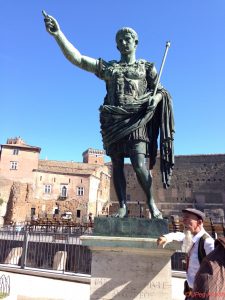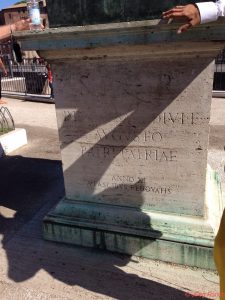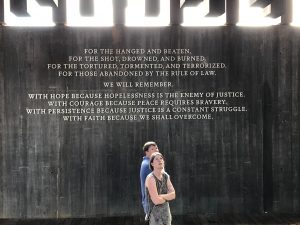
There is no memorial on the Posey County, Indiana courthouse lawn to the seven Negroes murdered by a white mob on October 12, 1878. There is a modest stele naming those soldiers with Posey County connections who served in the Revolutionary War and an impressive statue honoring all who served in the Civil War. There are bronze plaques on the lobby walls of the Posey County Coliseum commemorating many of those who served. The Coliseum houses one of Posey County’s two courts and the other court is located in the courthouse.
Because I was the elected Posey Circuit Court Judge and because our son, James David Redwine, was a West Point graduate who would later earn a Bronze Star for Service on the front lines of both the Gulf War 1990-1991 and the Iraq War of 2003-2011 I was asked to speak at both the War Memorial Re-Dedication on Sunday, October 21, 1990 and Re-Dedication of the Soldiers and Sailors Monument on July 23, 2008. I was honored to do so and wrote the following poems for the occasions. The poems appeared in several newspapers after each commemoration:
WAR MEMORIAL RE-DEDICATION
(Sunday, October 21, 1990)
SUNDAY MORNING CHIMES
How dear it is to be alive:
To hear the peal of morning chimes;
To feel the invigorating sting of this autumn day;
To taste the rich and biting air;
To smell the acrid smoke of burning leaves;
To see the glory of Nature’s third act.
How satisfying to still be a player:
To know a child’s trust;
A family’s support;
A friend’s companionship; or
A lover’s caress.
How thrilling it is to learn,
To plan,
To strive
To serve,
To live!
These wondrous things: These sensations;
These desires;
These dreams;
These visions. This life,
Is what these heroes have sacrificed for us.
RE-DEDICATION OF THE SOLDIERS AND SAILORS MONUMENT
(Wednesday, July 23, 2008)
WELL DONE!
At Lexington and Concord, the young blood began to flow.
At the Battle of New Orleans, muskets killed our cousins and our foes.
At the Alamo and Buena Vista, we stood to the last man.
At Shiloh, Chickamauga and Gettysburg, brothers’ blood soaked the sand.
At San Juan Hill and when the Maine went down, our soldiers never flinched.
At Verdun and by the Marne, a million men died in the trench.
At D-Day and the Battle of the Bulge, after Hiroshima’s mushroom clouds,
At Incheon Landing the forgotten war brought many more funeral shrouds.
At Khe Sanh and during Tet, we held our own and more.
At the Battle of Medina Ridge, our Gulf War warriors upheld the Corps.
At Sinjar, Mosul, and places with strange names,
Our Iraqi War veterans now earn their fame.
In uniforms, our citizens have served well everyone.
Today, we here proclaim to them our solemn praise: Well done!
It is fitting and proper that we honor those who serve and that we are permanently reminded of the horrors of war. Society needs to be constantly on guard and eternally grateful. Of course, the reasons that call for memorials about wars are much the same as why we need memorials to our collective evil done to some citizens by other citizens.
Since I first discovered, by accident, in 1990 the legal system’s long covered up murders of Daniel Harrison, Sr., Daniel Harrison, Jr., John Harrison, James Good, Ed Warner, William Chambers and Jeff Hopkins by, as the Mt. Vernon, Indiana Western Star Newspaper said on October 17, 1878, “two to three hundred of the county’s best white citizens” right on the Posey County, Indiana courthouse campus, I have called for accountability and a memorial to the victims. Society owes this atonement to the victims and we as a society need it for ourselves.

